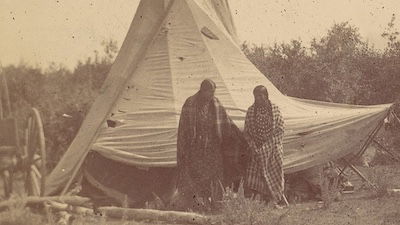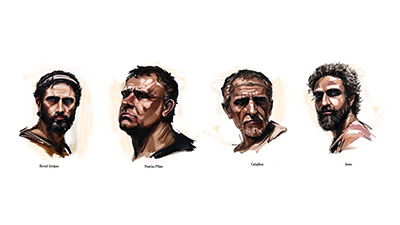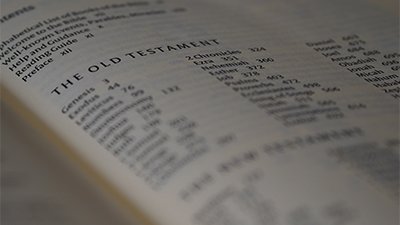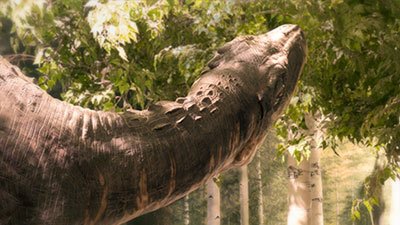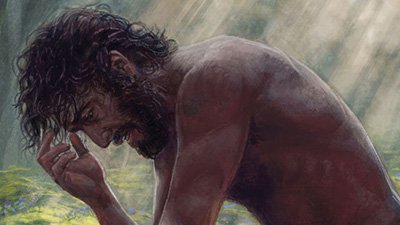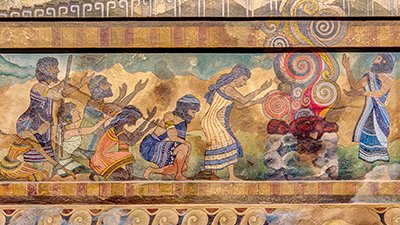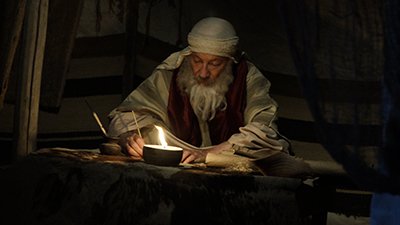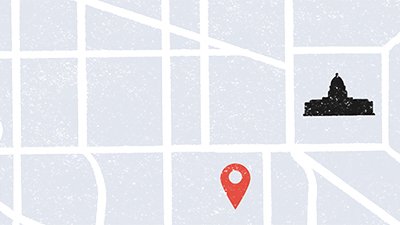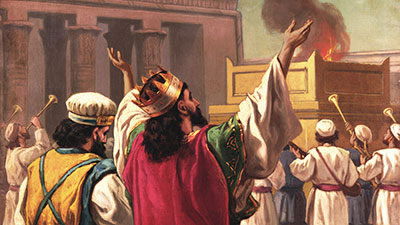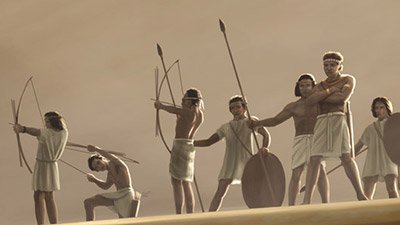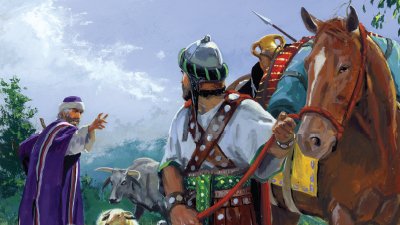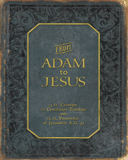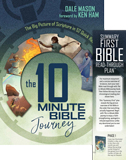Bible History
The Bible is the history book of the universe. It provides an accurate account of historical events that serve as a foundation and a framework for understanding, dating, and interpreting secular history and historical science.
Seven C’s of the Bible
Most people look at the Bible as a book that contains many interesting stories and theological teaching. While this is true, the Bible is so much more—it’s a history book that reveals the major events of history that are foundational to the Bible’s important messages.
Chronology of Ancient Civilizations
Nothing in ancient history (when properly understood) can possibly conflict with biblical history. As archaeologists continue to make exciting new discoveries, we have nothing to worry about. God’s eyewitness record is 100% true and reliable, the only sure starting point for studying the timeline of human history.
The Biblical Timescale
The Bible provides us with a timescale for history. Although not measured by means of atomic clocks, the several dates and facts underlay a proper understanding of the Bible.
Josephus and Biblical History
Josephus is an eminently important and helpful source for gathering details about New Testament times, but Christians should be careful not to read him as an apologist for Christianity or to rely upon him too heavily. Nor should they be ignorant of his bias in favor of Judaism.
Articles About Bible History
-
April 1, 2025 from Answers Magazine
At the center of Jesus’ trial and crucifixion stand three major political and religious rulers: Herod Antipas, Pontius Pilate, and Caiaphas the high priest.
-
July 9, 2023 from Answers Magazine
God is writing his story on this whirling blue planet, placed in an absolutely huge universe, which is the stage you’d expect for a God-sized plan.
-
July 31, 2022 from Answers Magazine
Four big debates rage in our world today. The foundational answers are in Genesis 1–11.
-
June 1, 2022 from Answers Magazine
Imagine dinosaurs living with people. It’s the only reasonable conclusion if the Bible is true.
-
Oct. 1, 2021 from Answers Magazine
While researching for the Creation Museum’s newest exhibit, the content writer discovered surprising parallels between life at the time of Christ and the culture today.
-
Nov. 8, 2020 from Answers Magazine
One of the most-quoted resources about the world during Bible times is the first-century historian Josephus. But who was this man?
-
May 30, 2020 from Answers in Depth
Biblical scholar John Walton asserts Noah is the “one man” that Paul refers to in his address to the Athenians in Acts 17:26. But is he correct?
-
May 26, 2019 from Answers Magazine
Scripture is so hard to understand. How can anyone be sure they understand it correctly?
-
Nov. 1, 2017 from Answers Magazine
Just three blocks from the heart of DC, a new museum has risen that invites all people to take a closer look at the Bible.
-
July 3, 2016 from Answers Magazine
The next time you’re tempted to despair at the hopelessness of our modern church, consider Hezekiah. He faced similar challenges—and overcame them.
-
June 5, 2016 from Answers Magazine
The Nazareth Inscription is a powerful piece of extrabiblical evidence that Christ’s Resurrection was already being proclaimed shortly after He was raised.
-
Are There 20 Commandments?March 2, 2015
The Bible is inerrant, yet some have tried to state that the Bible erroneously records 20 commandments.
-
Jan. 12, 2014 from Answers Magazine
Have you ever wondered how the early history of Egypt and other ancient nations fits within biblical history?
-
Editorials Debate Value of Sanitized BibleMarch 3, 2012 from News to Know
Editorial discusses the supposed usefulness of a "sugarcoated" Bible.
-
Feedback ArticleHistorical FictionFeb. 3, 2012 from Feedback
Is it right to incorporate biblical history into fictional stories? Tim Chaffey, AiG–U.S., takes a look at this issue.
-
Feb. 6, 2011 from Answers Magazine
Lord, what area of my life today needs to be brought under your authority in full compliance to your Holy Word?
PDF Download -
Red Sea Parted “Naturally”?Sept. 25, 2010
A recently reported study by meteorologist Carl Drews has suggested a way in which the waters of the Red Sea could have parted “naturally,” enabling the children of Israel, led by Moses, to cross as pharaoh’s army pursued (Exodus 14). Such an explanation might leave God with credit for the timing of the event, but little else.
-
Feedback ArticleWill the World End in 2012?Sept. 17, 2010 from Feedback
A concerned reader wonders about the 2012 hype. Tim Chaffey, AiG-U.S., addresses his concerns.
-
Modern Jews Have Implications for Biblical HistoryJune 5, 2010
The history of the Jews—and, more broadly, the Hebrews—is wrapped up in the history of the Bible. For that reason alone, modern studies of those identifying as Jews often have interesting implications for biblical history.
-
So, What Are the ‘7 C’s’ Anyway?Jan. 1, 2010
Those familiar with the message of the Creation Museum know that it will feature a ‘walk through history’ based on the ‘7 C’s of History.’
-
Magazine Department ArticleA Parting of the WavesJan. 1, 2010 from Answers Magazine
Is there any natural explanation for the parting of the Red Sea that allowed Moses and the children of Israel to cross and elude the pharaoh’s army?
-
Feedback ArticleDo Chinese Characters Support Genesis?June 26, 2009 from Feedback
Are the Creation and Flood accounts of Genesis hidden in Chinese characters?
-
Connecting the Bible to the Real WorldMarch 4, 2008
With a biblical framework in place, we can teach our children how the Bible explains the world around us.
-
Feedback ArticleHow Can You Claim the Bible is God’s Eyewitness Account of History?June 23, 2006 from Feedback
Why should we trust what the Bible says about itself?
-
Magazine ArticleReal History: The Timeline of the BibleSept. 1, 2005, pp. 28–29
The Ussher timeline chart by Paul Hansen that appeared in Creation magazine in September 2005 is available for download.
-
Seven C’s of HistoryMay 20, 2004
Most people look at the Bible as a book that contains many interesting stories and theological teaching. While this is true, the Bible is so much more!
-
Feedback ArticleArchbishop James Ussher—Blundered or Brilliant?March 19, 2004 from Feedback
This feedback critiques the creator of the comics which depicted James Ussher as a fool, despite the fact that he was a giant among scholars.
-
Dead Archbishop “Revived”!Oct. 1, 2003 from Answers Update
Archbishop James Ussher, one of history’s most famous and respected historians, spent over five years researching and writing The Annals of the World. His volume is now available once again.
-
Hairless HokumAug. 25, 2003
The origin of clothes is only a mystery if one rejects the written record of God’s Word.
-
The Bible—“It’s Not Historical”April 1, 2003 from Answers Update
Millions of people each year visit the Smithsonian Institution—a leading research organization in Washington, D.C., with many museums—funded by US tax dollars. But what message are visitors getting?
-
Book ChapterThe Seven CsJuly 1, 2002 from Why Won’t They Listen?
We need to begin a full-scale training program to equip the troops with the most powerful weapon in the universe—the Word of God.
-
Semi-Technical Research PaperSojourn of the JewsApril 1, 2001, pp. 60–61
Chronologists have differing views as to the length of the sojourn of the Jews. I think it would not be a problem for anybody if they just collect all the relevant verses.
-
Semi-Technical Research PaperEvidentialism–The Bible and Assyrian ChronologyApril 1, 2001, pp. 62–68
There is no reason to bend the Bible to fit the current reconstructions of Assyrian chronology.
-
More than Just Bible StoriesFeb. 26, 2001
In many church settings, Bible stories are taught as just that—stories, nice accounts that, although they may have a moral message, have no real bearing on the world around us.
-
Magazine ArticleIn the Days of PelegDec. 1, 1999, pp. 46–49
Ancient documents about the days of Peleg are consistent with the total accuracy of the Bible’s chronology.
-
Technical Research PaperThe Antediluvian Patriarchs and the Sumerian King ListDec. 1, 1998, pp. 347–357
The Sumerian King List records the lengths of reigns of the kings of Sumer. The initial section deals with kings before the Flood and is significantly different from the rest.
-
Technical Research PaperSome Remarks Preliminary to a Biblical ChronologyApril 1, 1998, pp. 98–106
There are a number of points where modern Biblical chronologies disagree with each other.
-
Magazine ArticleWhere Does History Begin?June 1, 1992, pp. 44–45
The early chapters of Genesis are factual history, and when compared with other writings the Bible has dramatically superior records of creation, the Fall, the Flood, and the Tower of Babel.
-
Magazine ArticleCreation, Flood and Coming FireMarch 1, 1986, pp. 17–20
There is an interesting prophecy in 2 Peter 3 concerning the last days of this earth’s history, and it very much relates to the whole creation/evolution issue!
Recommended Resources

Answers in Genesis is an apologetics ministry, dedicated to helping Christians defend their faith and proclaim the good news of Jesus Christ.
- Customer Service 800.778.3390
- Available Monday–Friday | 9 AM–5 PM ET
- © 2025 Answers in Genesis


